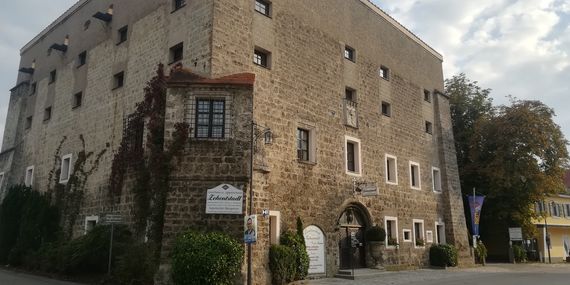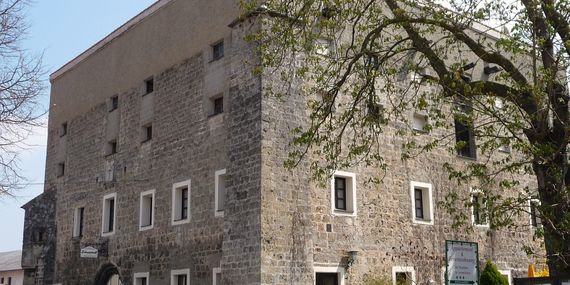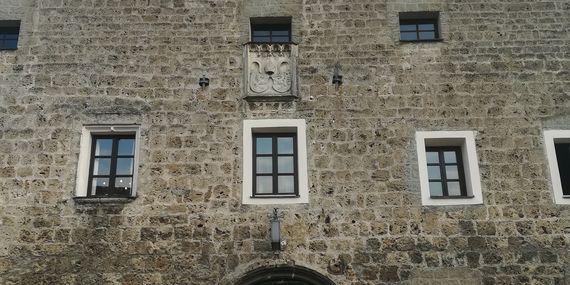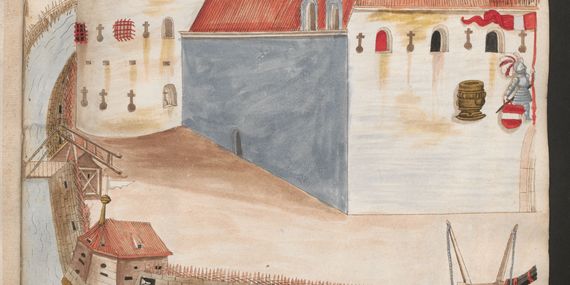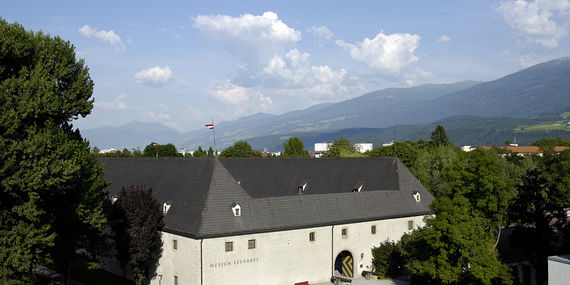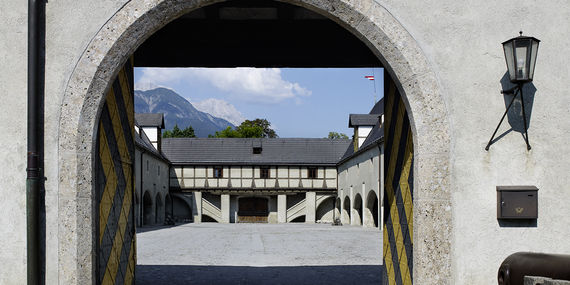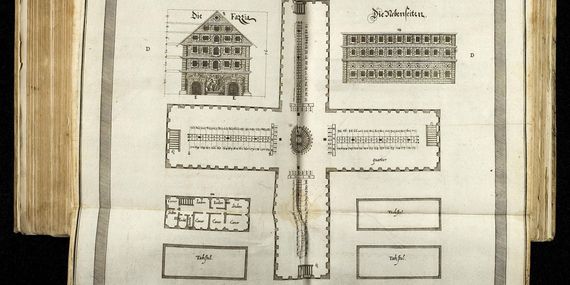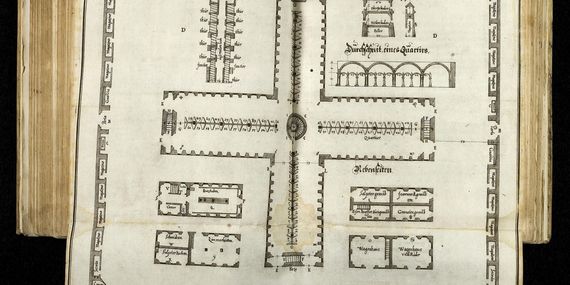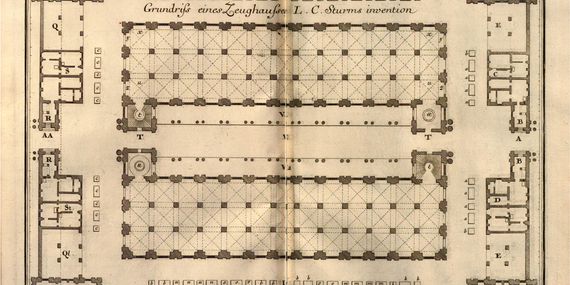Armbrustwinde, 1501/1525 (Oberhausmuseum Passau).
Copyright: Oberhausmuseum Passau
Armoury and Defense
The safety requirements for armouries are higher than for other storage buildings, which is obvious due to their function. The most common way of securing armouries, or the dangerous goods inside, is to lattice windows. At least on the ground floor, lattices have been applied to most armoury windows. Additionally lockable shutters were sometimes implemented; at the armoury in Burghausen, the recesses in the masonry for grilles and the iron clamps for fastening the shutters also indicate the precautions.
The Kasten in Aigen am Inn is a prime example of an armoury: a block-like, almost square structure with two full storeys and two storage levels above and a trench roof that is concealed behind the raised cornice wall (fire protection). The storage also has supporting pillars reinforcing the four corners of the building cube, a sturdy oriel window placed over a corner on the northeast side distributes a fortified, castle-like character to the building. The massive walls consisting of almost jointless brickwork and rough plastered tuff stone blocks illustrate the enclave position of the Aigen storage in the possession of the bishop of Passau, surrounded by opposing, ducal Lower Bavarian land.
However, armouries surrounded by walls, ramparts or towers („defensible armouries“) are rare. The imperial armoury in Innsbruck is one example. Furttenbach in 1635 and Sturm 1719 also included defensive works in their ideal designs of armouries.
